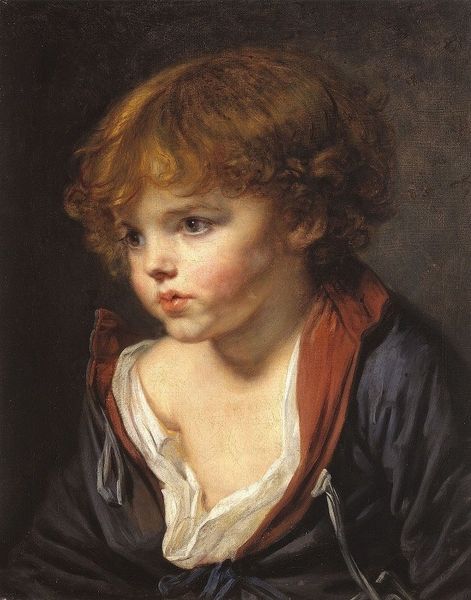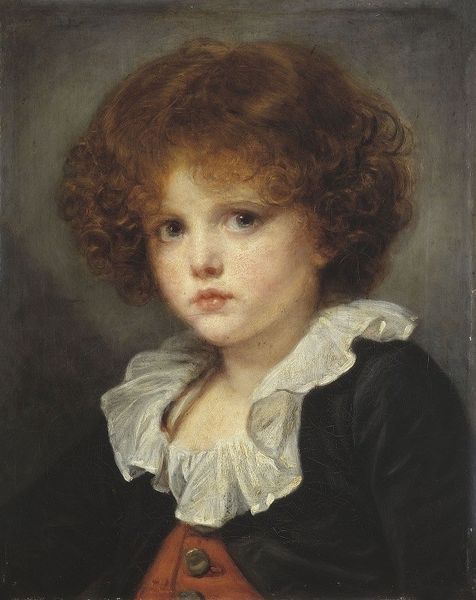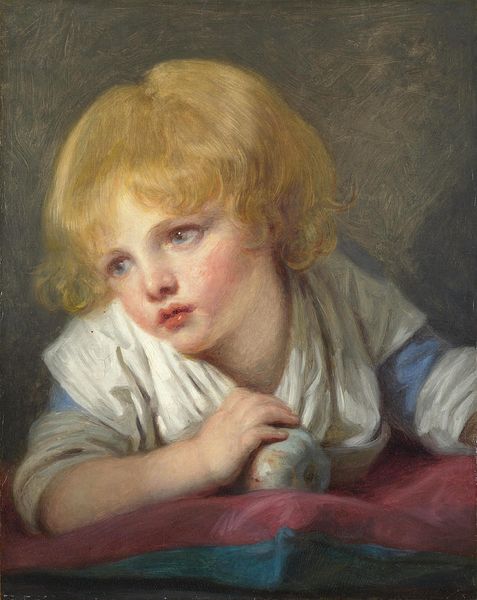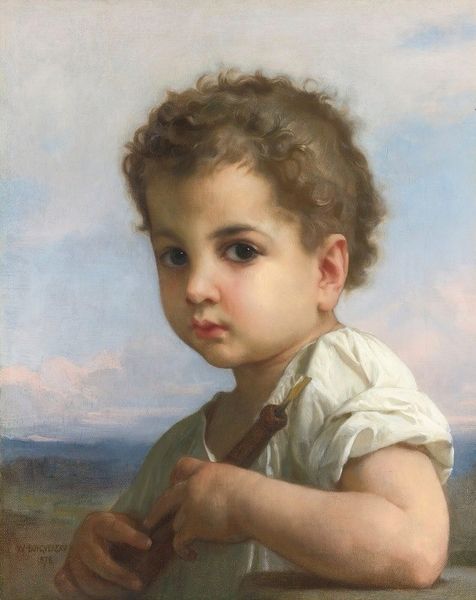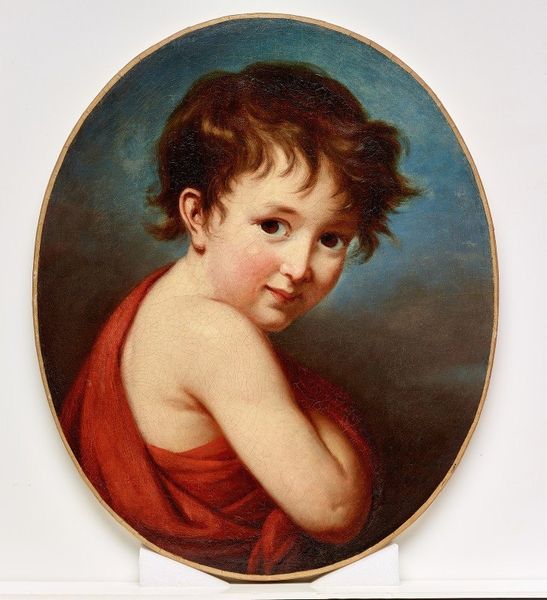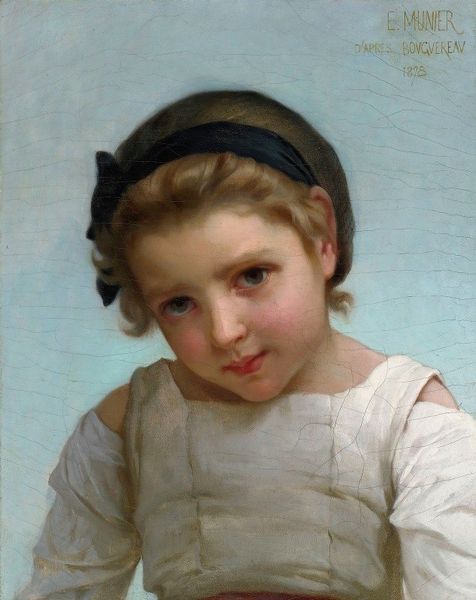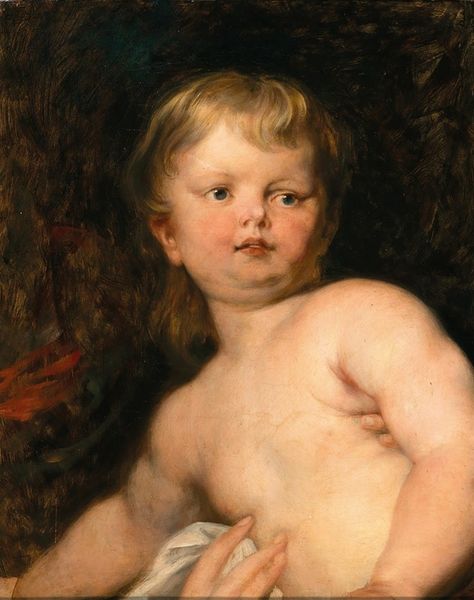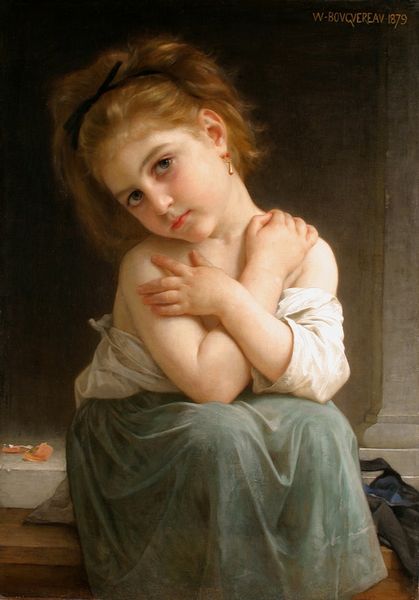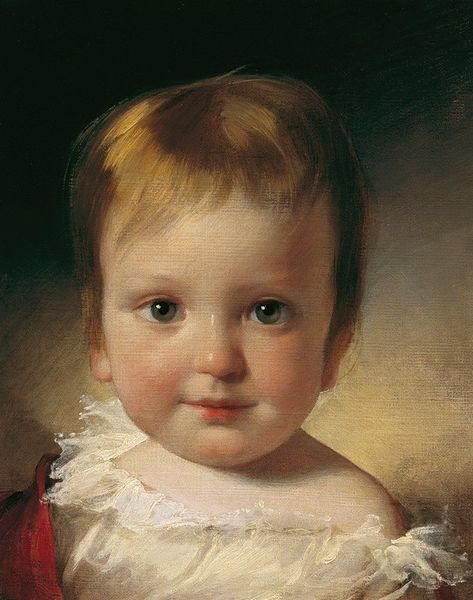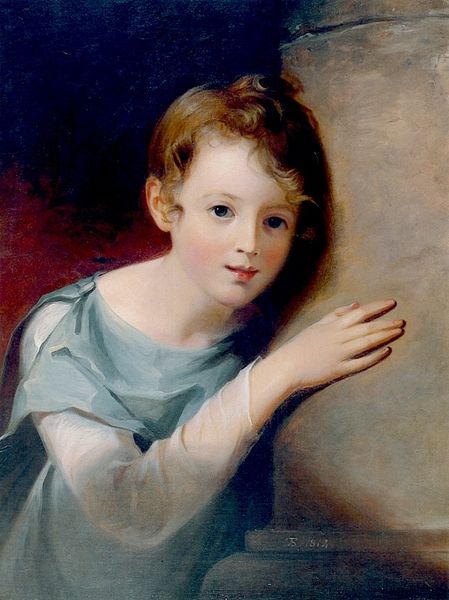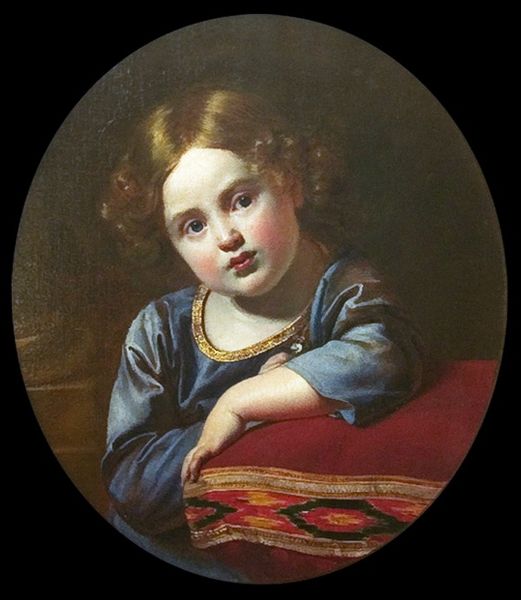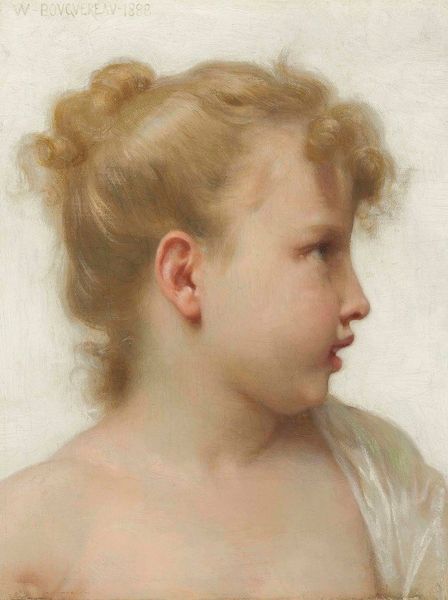
painting, oil-paint
#
portrait
#
figurative
#
painting
#
oil-paint
#
figuration
#
romanticism
#
portrait drawing
#
genre-painting
#
academic-art
Copyright: Public Domain: Artvee
Curator: Before us is *Bildnis eines Kindes*, or "Portrait of a Child" in English. The artist is Jean-Baptiste Greuze, a prominent name associated with genre painting during the rise of the bourgeoisie. It’s an oil-on-canvas piece. Editor: The first thing that strikes me is how incredibly precious this child looks! The light, the chubby cheeks...and is it me, or does that posture radiate some serious ennui? It’s such an affected pose for someone so young. Curator: Exactly! That’s classic Greuze. He excelled at imbuing his figures, especially children, with a sense of sentimental virtue that resonated deeply with the art market of the time. His child figures often carried heavy moralizing narratives. Editor: It's the theatricality that feels so manufactured now. Look at how they positioned the small hand against the head. Are we meant to see childlike wonder, or some melancholy rumination? What are we meant to think looking at this child? Is this supposed to feel progressive, because it is figurative and from genre painting? Curator: In a sense, it was progressive, in that it broke away from the rigid structures of history painting. Pieces such as this were displayed prominently in the Salons, gaining significant critical acclaim. Greuze skillfully tapped into the growing market for more accessible and relatable themes for a rising middle class who felt like this new "genre" art captured values important to them, while art was still accessible, thus increasing its role in society. Editor: Yet, that "virtue" feels constructed. Where are the other depictions of working-class children, especially the exploitation of their childhood? It's easy to moralize innocence from a space of privilege. This form of art ends up whitewashing larger societal forces that continue to inflict trauma today. Curator: Indeed. While Greuze’s sentimental paintings brought him wealth and fame, the art world eventually turned against his approach as more modern styles developed. This painting serves to provide a vital connection to the changing landscape of art’s place in the wider public, but, also reminds us of the skewed perceptions displayed through a powerful, bourgeois, artistic eye. Editor: It reminds me that representation matters, and who holds the paintbrush holds considerable social and cultural power, whether consciously or not. It's necessary to highlight all voices and narratives—a goal that all public spaces and art galleries, even in the modern era, still struggle to achieve.
Comments
No comments
Be the first to comment and join the conversation on the ultimate creative platform.
